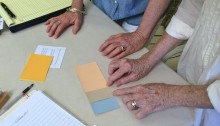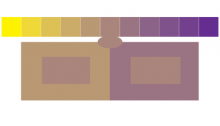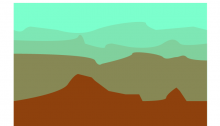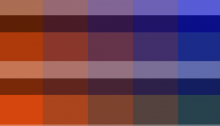Color Relationships 1, Spring 2016 week 3
The third session of the Color Relationships class for Spring 2016 was held on Wednesday, April 20. We shared the results from the previous two homework assignments, discussed and critiqued the many examples in Josef Albers’ book Interaction of Color, and introduced the new assignment, Transposing Colors of Equal Value. This is by far the most difficult exercise in the course, and usually involves many hours of trial and error. See the full post for class materials, photos, and videos to supplement our class time.







